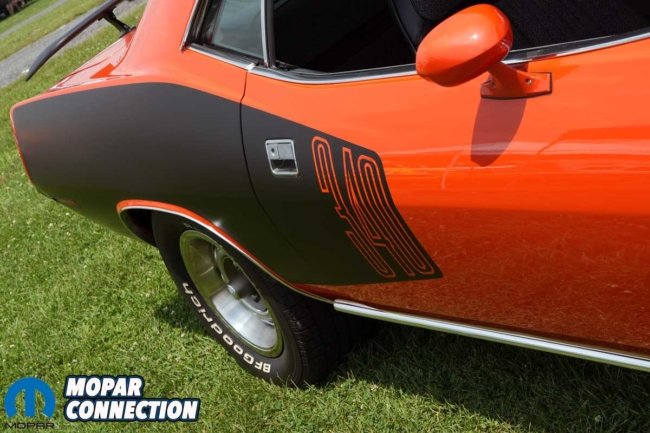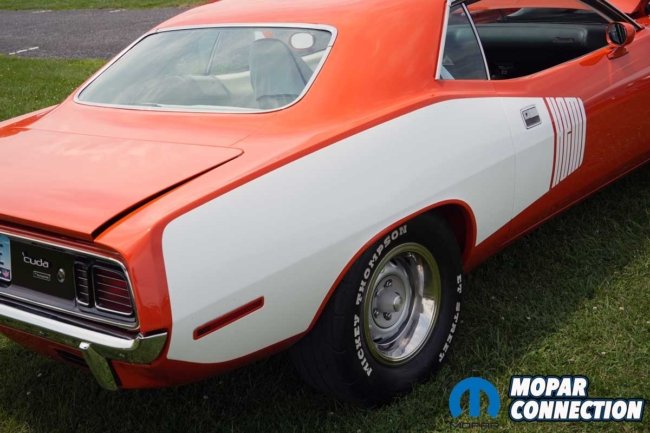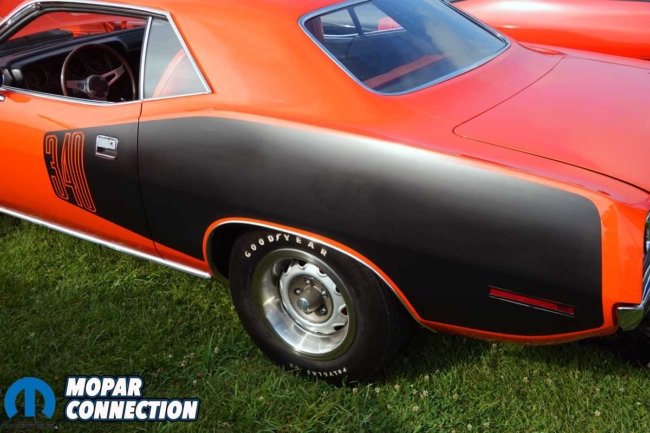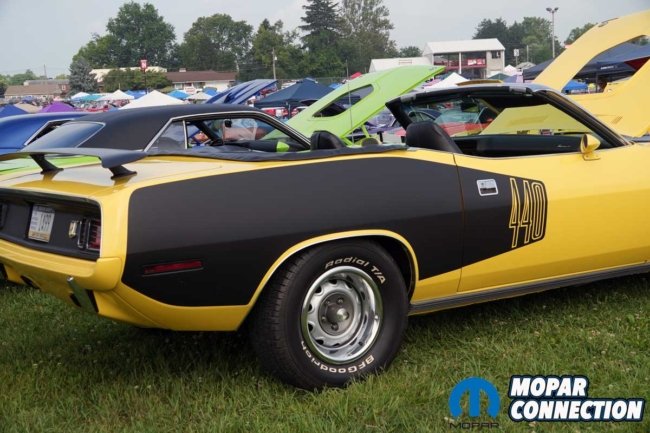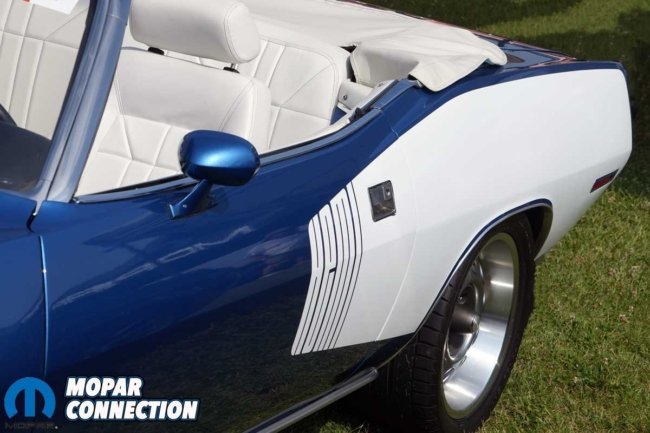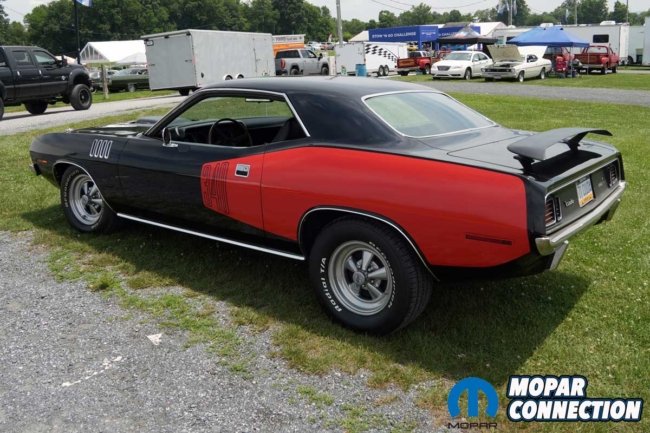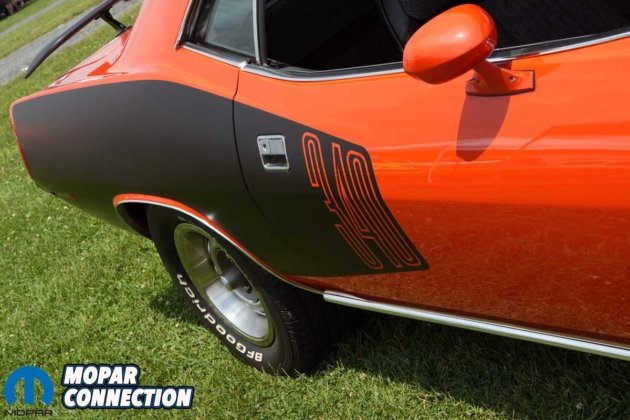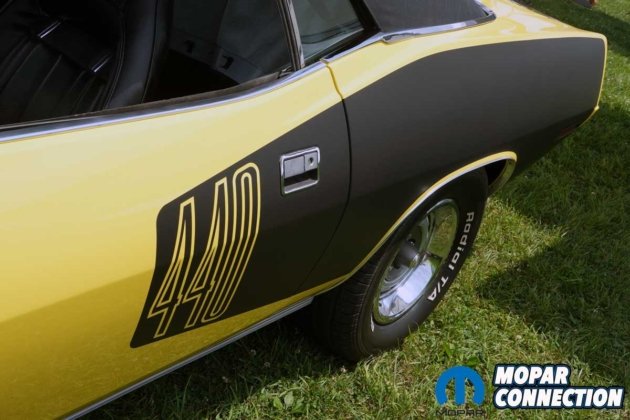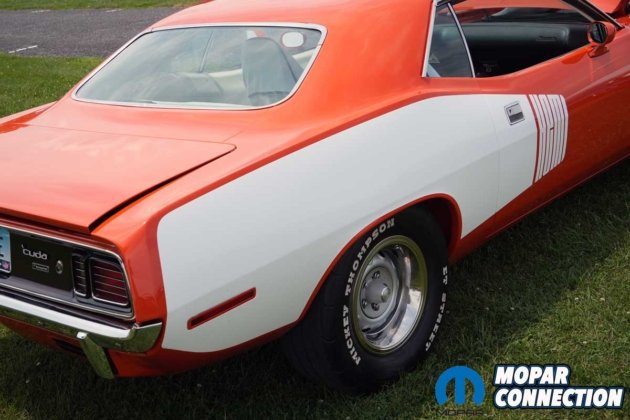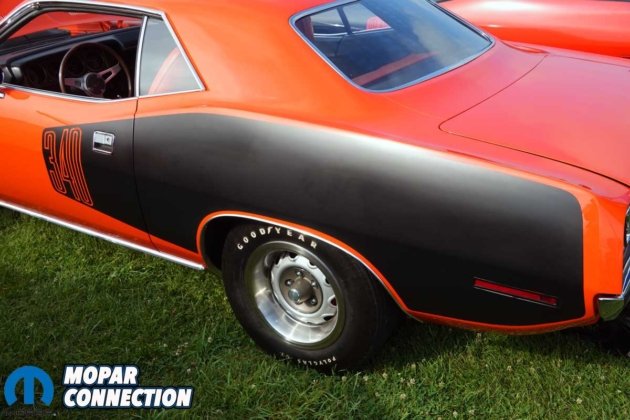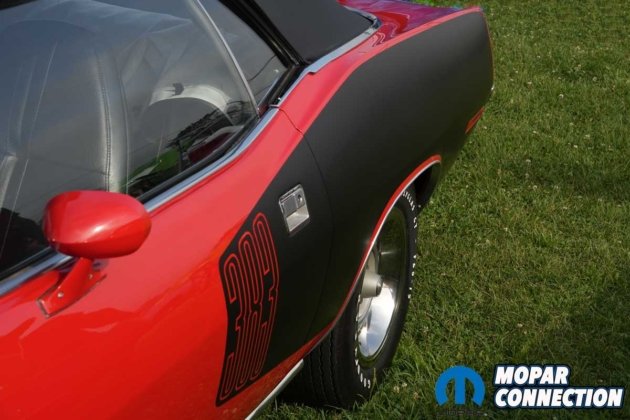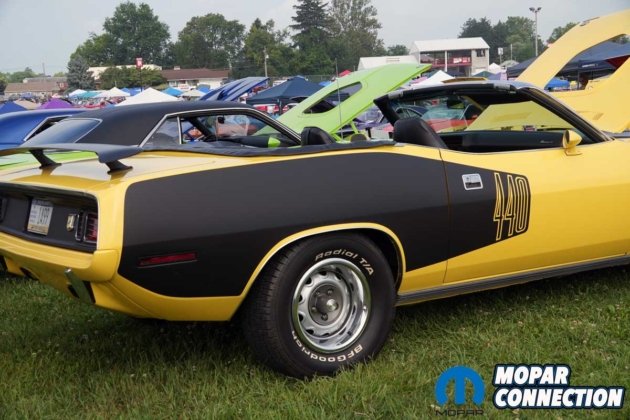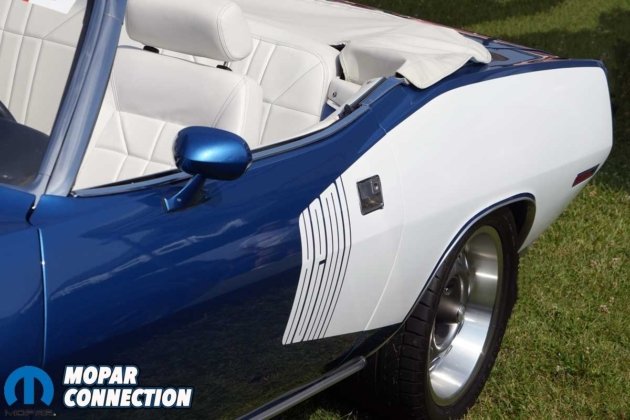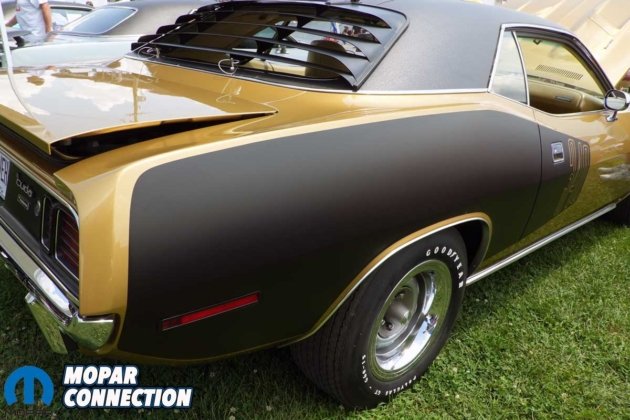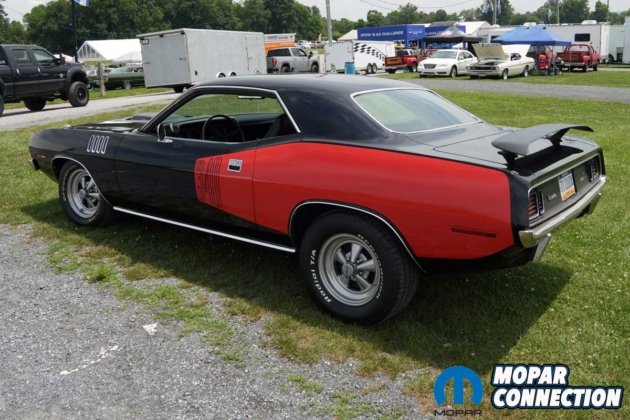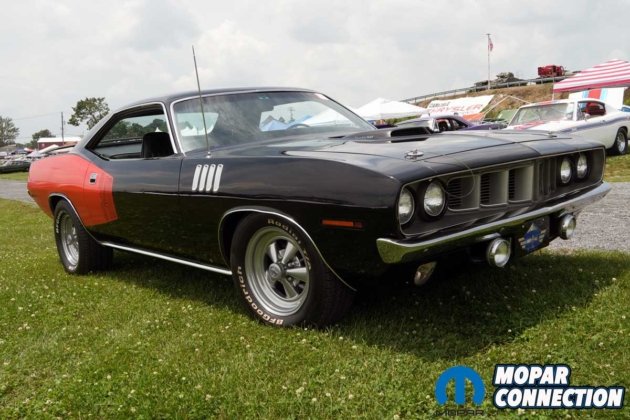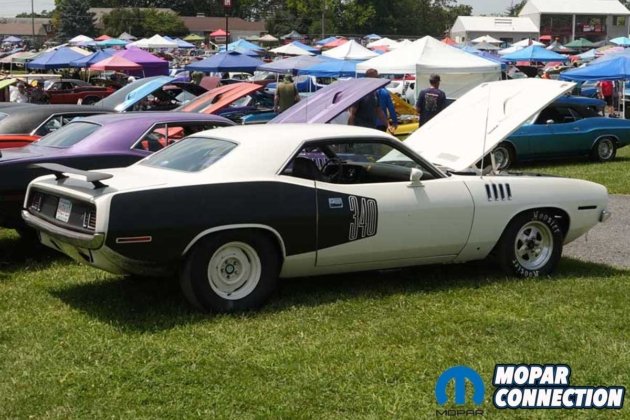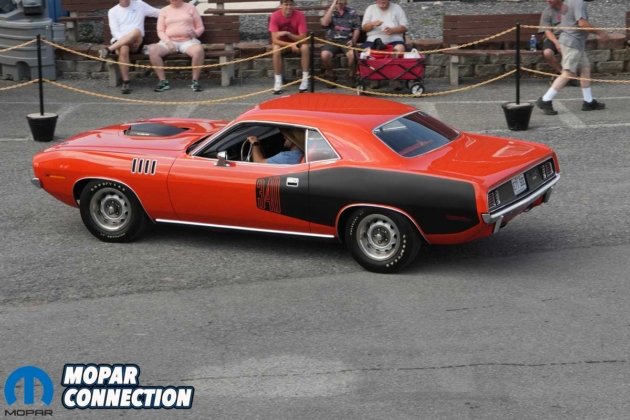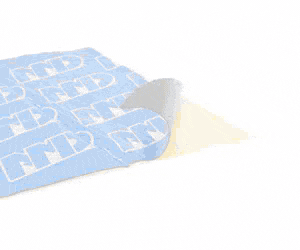
The Mopar muscle car era gave us a lot of bold ideas, massive engines, wild colors, and aggressive styling, but few visual statements hit as hard as Plymouth’s 1971 ’Cuda billboard graphic. The 2025 Carlisle Nationals had many billboard ‘Cudas in attendance, which got us wondering about why Chrysler introduced such an aggressive graphic.
Above: Love them or hate them, the 1971 ’Cuda’s billboard stripes made a bold statement.
Introduced for just one year, the billboard badge was not just a decal; it was a rolling announcement of cubic inch displacement and attitude. Today, it is considered one of the most iconic (and polarizing) graphics of the golden era of Detroit muscle.
The billboard graphic was not subtle, and that was the point. It was likely the most prominent side stripe ever offered by a Big Three automaker from the factory. Wrapping across the door and stretching into the quarter panel, the oversized decal featured large block lettering spelling out the engine displacement, “HEMI,” “440,” “383,” or “340,” depending on how the car was optioned. It was bold, brash, and unmistakable.
Above: Billboard stripes were available in just two colors—black or white. Depending on the Plymouth body color, sometimes only one of the two was offered.
Offered in either black or white, the billboard contrasted sharply against the body color, turning heads at every stoplight. A black graphic (Code V6X) on a lighter-colored body made a statement that nobody could ignore. Conversely, a white graphic (V6W) on a darker car added just enough muscle flair without being cartoonish.
The billboard stripe was not randomly installed. Plymouth designers carefully considered contrast and visibility when matching stripe color to body paint. Below is a breakdown of 1971 factory color compatibility:
Factory Color vs. Stripe Chart
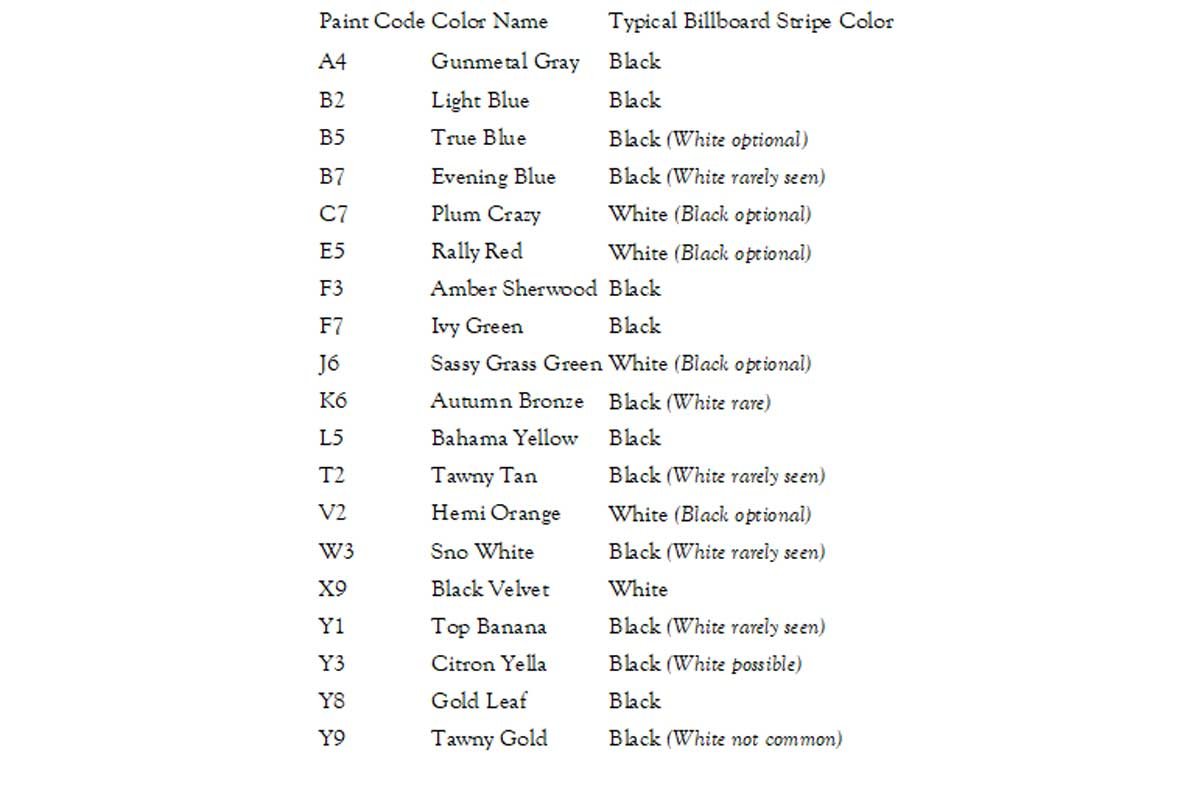
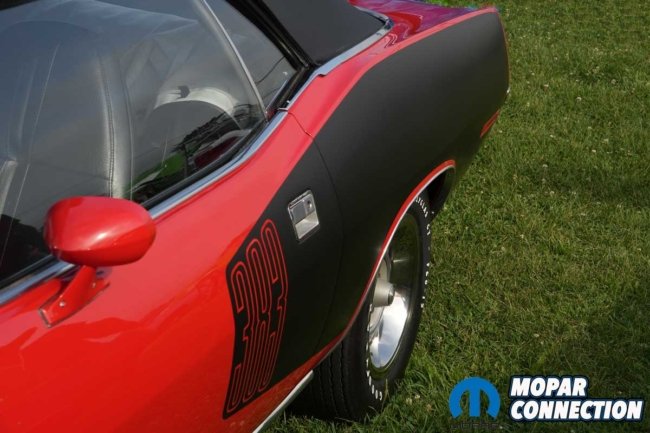
Above: The billboard option was available on the base 383 ’Cuda, as well as models equipped with the 340, 440, and Hemi engines.
Red, silver, or other billboard colors were never factory options, though they may appear on modern custom builds.
Plymouth reserved the billboard graphic exclusively for the 1971 model year, making it a rare and desirable option among collectors today. It replaced the 1970 ’Cuda’s simpler hockey-stick stripe and helped define the more extreme styling language Mopar adopted in ’71, complete with new grille and fender vent treatments.
Although the billboard was available across the ’Cuda line, the rarest configuration of all was the billboard-equipped Hemi ’Cuda. Only a handful left the factory with this combo, and just one red-on-red car is known to have come with the white HEMI billboard, a one-of-one legend that resurfaced in recent years.
Above: Thanks to the materials of the era, exposure to the elements, and waxes of the day, most original billboard stripes began to fail within a decade of installation.
Even in its era, the stripe was divisive. Some loved the aggressive look; it screamed muscle, daring other manufacturers to match Plymouth’s swagger. Others thought it looked cartoonish or out of proportion, especially on an already expressive body. Enthusiasts and restorers today remain split; the stripe is either the ’Cuda’s crown jewel or a style misfire, depending on who you ask.
Regardless of opinion, there is no denying its place in Mopar lore. As eye-catching as the billboard was, it came with a downside: the need for maintenance.
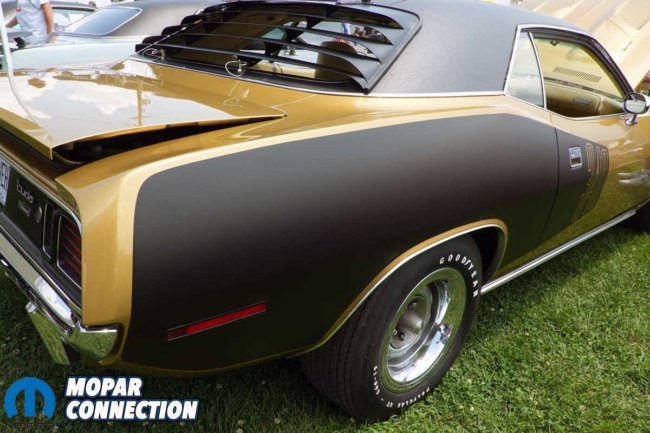
Above: Particular attention was required when waxing the ’71 ‘Cuda. The paste waxes of the day could leave swirl marks on the billboard, particularly the edges where the applicator accidentally made contact with the badge.
The original decals were made from early-generation vinyl, which had limited UV resistance. Sunlight, heat, and washing would cause fading, peeling, or cracking. The massive surface area made cleaning a challenge, and careless polishing could easily damage the edges. Many factory graphics did not survive the first decade intact.
Even simple things like waxing became tricky. Owners had to avoid getting wax built up around the edges or, worse, discoloring the vinyl. And automatic car washes? Not good. Those spinning brushes could lift the edges or dull the entire stripe in one pass.
Above: While the color combo on this ’71 ’Cuda looks striking, Plymouth never offered red billboard stripes. Still, the black paint, red graphics, Cragar SS wheels, and BF Goodrich Radial T/As are pure 1970s attitude.
If a car needed paint or bodywork, preserving the original stripe was nearly impossible. Most owners or shops had no choice but to remove and replace it, a challenging task before reproduction kits became available.
Today, several companies reproduce billboard stripe kits using high-quality modern vinyl that is more durable and resistant to UV and environmental wear. Suppliers like Phoenix Graphix and Stencils & Stripes offer accurate reproductions that let restorers bring back the big look without the headaches of 1970s materials.
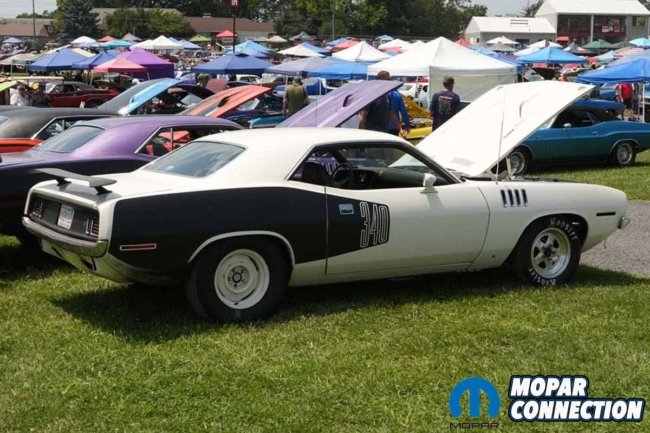
Above: This ’Cuda has seen track time. It is tough to tell where the billboard ends, and the tire rubber begins on the quarter panel.
Still, it is not a maintenance-free feature. Modern owners are encouraged to use vinyl-safe detailing products, avoid abrasive cleaners, and park their cars out of direct sun when possible.
The 1971 ‘Cuda billboard graphic is more than just a stripe; it is a declaration. In one bold sweep of vinyl, Plymouth told the world exactly what was under the hood. It is a piece of design that captured the spirit of an era when muscle cars were all about excess, and nobody played the game louder than Plymouth.
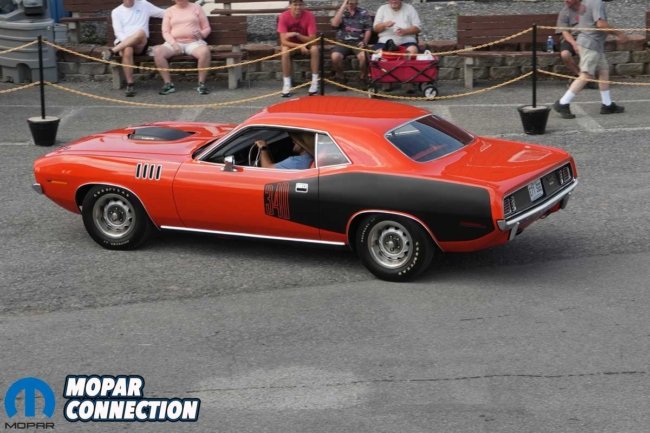
Above: The 1971 billboard stripe was a gutsy move by Plymouth as the muscle car era neared its end. Regardless of opinion, it was a distinctive look no other manufacturer dared to copy.
Love it or hate it, the billboard graphic took Mopar’s already extreme styling and cranked it to eleven, cementing the ’71 ’Cuda as one of the boldest muscle cars of all time. It remains one of the defining marks of Mopar muscle and one of the last wild swings before the performance party wound down. Like the cars themselves, the graphics were loud, proud, and built for those who dared to stand out.



